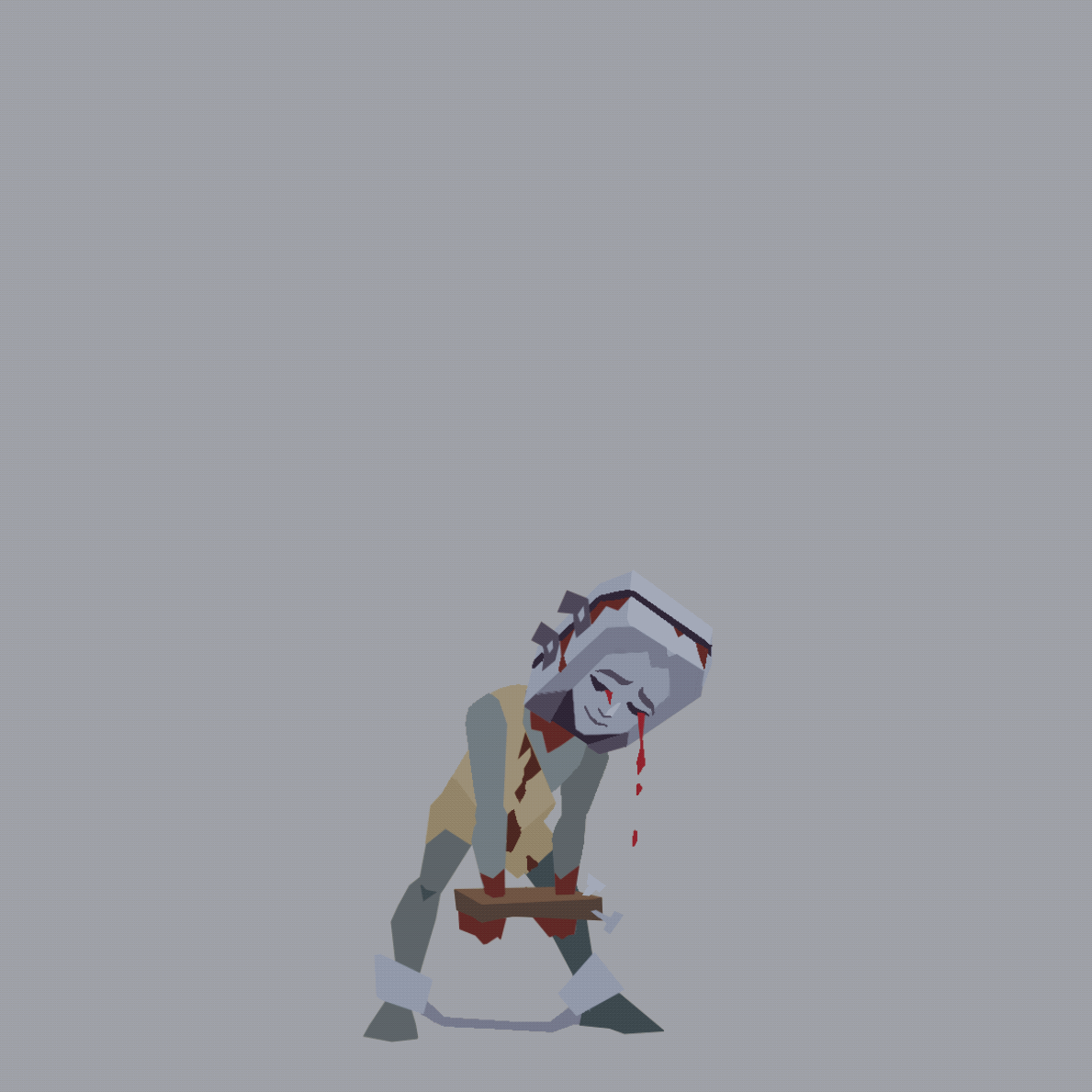
CORE PILLARS
In the early stages of the project, as the Project Director, I established three Core Pillars to make our game stand out. Each department will center its future design work around these pillars. Based on these three pillars, me and my team designed the following characters, enemies, stories...
The game will revolve around these three pillars:
-
MEDIEVAL ELDRITCH HORROR
Explore and discover the story of the universe as you uncover the secrets of life from beyond the cosmos.
-
DYNAMIC 2D SIDESCROLLING COMBAT
Choose your own pace, with player-chosen character classes and abilities. Use customized abilities to overcome large, epic-scale boss fights.
-
UNPREDICTABLE EVENTS IN AN EVER-CHANGING EARTH
Change the world through your actions in a dynamic and reactive World.
Find new adventures and re-explore areas as events unfold.
SYSTEM DESIGN
As the Game Design Lead, I'm tasked with designing core game systems and mechanics, refining them through experimentation. I analyze similar games to create unique and captivating mechanics that surprise players. Specifically, I focus on the Machinist character, crafting detailed game mechanics that blend code and visual elements, refined through playtesting.
Additionally, I compile these insights into concise Game Design Documents to guide departmental understanding and facilitate integration within Unity for a seamless player experience.
MY CONTRIBUTIONS:
-
Designing three selectable classes
-
Focusing on one character - Machinist
-
Designing the core pillars
-
Designing the core loop
-
Designing all game systems
-
Control system
-
Basic actions
-
Three classes mechanics
-
Enemies and bosses
-
Environment interactions
-
User interfaces
-
CORE LOOP:
The game's objective is to collect scattered Fire Giant bones located across various countries, requiring players to continually explore the map. With this goal in mind, players will need to jump across platforms, explore the map, defeat enemies, and strengthen themselves throughout the game.

PLAYER ACTIONS:

Due to the additional combat systems in the game that players need to learn, I've kept player movement very simple. Players can move, jump, and dash. These three actions constitute the game's movement. Dash has a cooldown and consumes durability.
Because the game features three selectable classes, each with unique mechanics requiring different combinations of keys, I've set aside three skill keys in addition to the basic control keys. The actions for each class are based on combinations using these three skill keys.
HUNTER'S NOTEBOOK:
As the game lacks an equipment system other than weapons, I've only provided players with an inventory and weapon slot to ensure they spend less time adjusting equipment. Since players will access various menus in the game—such as player attributes, equipment, settings, maps, etc.—I've integrated all these elements into a single "Hunter's Notebook."
In the In-Game Menu, the information panel below will consistently display the player's health, character profession, currency, the number of Fire Giant Bones collected (final goal), and access to the death screen.


LEVEL UP
The game's upgrade system allows players to spend money to purchase skill points, which are then used to upgrade skills on skill-trees. The game offers players various types of skill trees to provide different strategic options.
This upgrade method allows players not only to increase numerical values but also to enhance gameplay mechanics. Additionally, the visual skill tree provides a clear display of different attribute branches, making it easier for players to make plans.

THREE CLASSES
In the game, I aim to provide players with player experiences of varying paces. Therefore, I've designed three professions for players to choose from.

Alchemists in the Kingdom of Gold
Use different materials to make a variety of different uses of potions, strengthen themselves, or throw.
Skilled at drawing Alchemy matrixes anywhere, summoning elements, or enchanting weapons.
Abilities:
-
Drink/Use potion as buff/debuff for enemy
-
Use Alchemy Matrix to set traps
Pace: slow, collecting resources first and using them during the fight.
Difficulty: 2/5

The machinist from the Iron Kingdom is skilled in mining and improving his weapon but knows nothing about magic.
The central item for this character is the transformable weapon they wield.
Abilities:
-
can parry the enemy’s attack
-
Have a weapon wheel to change weapons during the fight
Pace: fast pace, always fighting, and need the player's reaction.
Difficulty: 4/5

the Astrologer from the Nation of Stars.
Players will possess the ability to summon star spirit to help them in combat
Their normal attack is weak but can use magic to cast spells.
Star spirit brings higher damage and more abilities.
Abilities:
-
can use long-ranged spells
-
weak melee
-
Summon star spirit to bring burst damage
-
Pace: normal pace, use spells and star spirit to design a strategy to defeat the group of enemies.
Difficulty: 3/5
MACHINIST
During the 15-minute Vertical Slice, where the Machinist serves as the showcased character, I collaborate with the animation and programming departments to iteratively refine the character's functionality and visual representation. Additionally, I integrate the character's conceptual design, weapon mechanics, and background story seamlessly.

Some weapon transfrom idea in 3D
MECHANIC - WEAPON WHEEL
In the game, players can open the weapon wheel at any time to switch and utilize different weapons.
-
Time Slowdown
When players open the weapon wheel to switch weapons, time dilation occurs to prevent them from being attacked.
-
Metal Fatigue
Each weapon has its mental fatigue value, and each attack consumes a certain amount of fatigue. When the fatigue value reaches zero, each weapon is afflicted with a debuff.
-
Weapon Design
To ensure that each weapon is utilized and has its own purpose, I design enemies based on the weapons they wield.
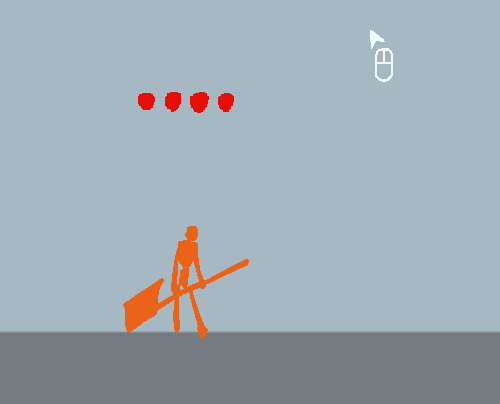
Switch Weapon
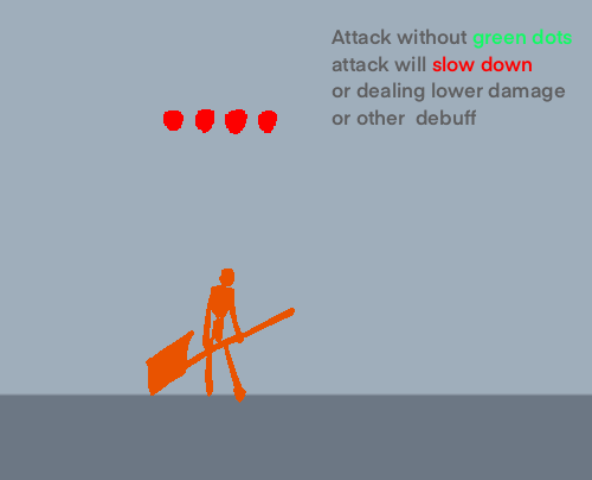
Metal Fatigue
MECHANIC - PARRY
When a player is about to be attacked, they have the option to parry the enemy's attack, enabling them to counter with a powerful strike.
-
Trigger
When a player opens the weapon wheel and switches weapons in the moments leading up to an enemy attack, they can effectively parry the next incoming attack.
-
Metal Fatigue Restoration
Each successful parry restores a certain amount of metal fatigue value (excluding the player's currently wielded weapon).
-
Sign
Not all enemy attacks can be parried. When parrying is possible, enemies will emit a pink glow and an auditory cue to provide players with a reaction window.
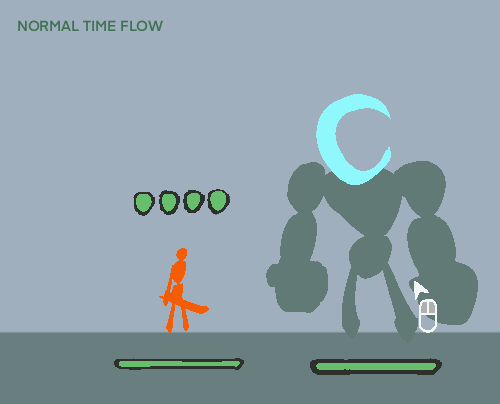
Parry
ENEMY DESIGN
In the demo, I designed four types of regular enemies, one elite enemy, and one boss.
Due to time and technical constraints, we couldn't create a large variety of enemies to ensure gameplay richness. Therefore, we focused on enhancing the playability of the enemies, with most having multiple skills. Additionally, the enemy design encompasses various types and attack methods, ensuring that each player's attack method and weapon can more easily counter different combinations of enemies or multiple enemies.
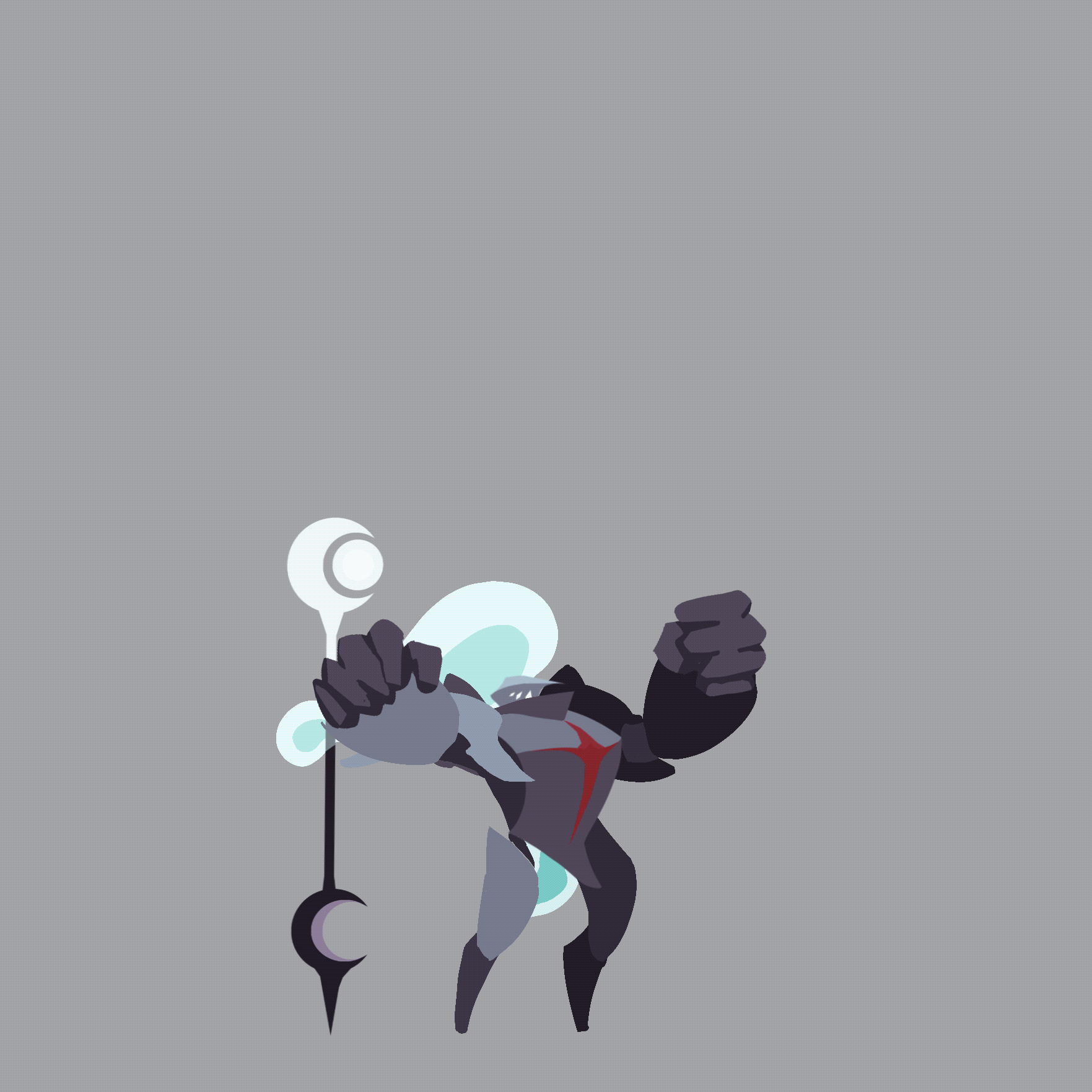
The Fire Knight:
The elite enemies in the game differ from regular monsters in that their attacks cannot be interrupted by the player's attacks. Therefore, players need to strategically use game mechanics, focusing on evasion and parrying, to effectively deal with them.
In the game's only elite enemy, the opponent charges up and rushes towards the player. To evade the charge, most players opt to dash behind the enemy. However, the creature possesses a quick turn-around attack to disrupt the player's attack rhythm.
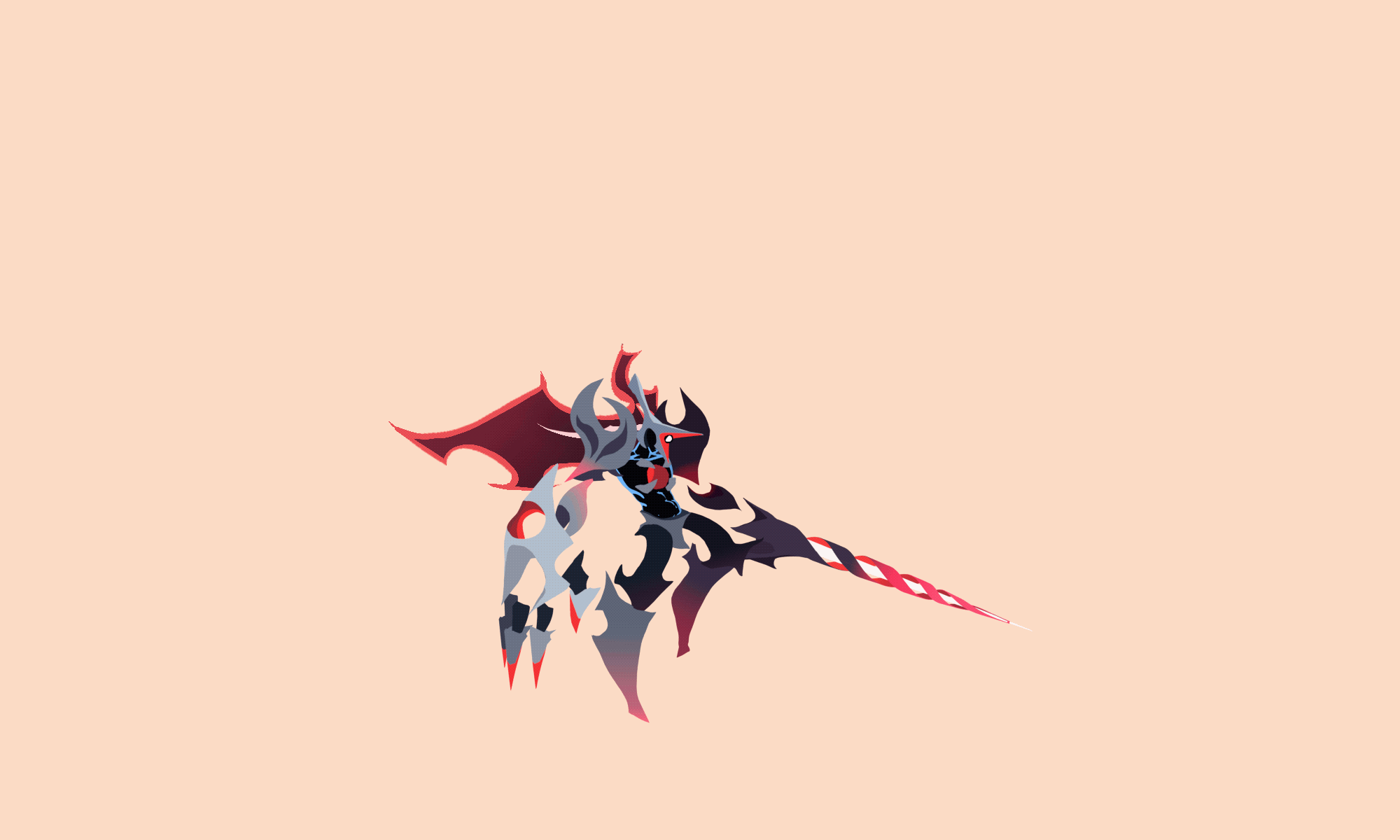
BOSS DESIGN - ZED
The main difference between the boss and regular enemies in the game is that a single parry cannot directly cause significant damage to the enemy. Instead, players need to successfully parry a certain number of times to trigger the effect. Additionally, successful parries will stun the enemy for a certain duration.
The design purpose of Zed is to familiarize players with various types of attack patterns: charging, normal attacks, long-range attacks, etc. Although there are many types, with practice, each skill can be easily countered. Therefore, players need time to learn to counter his various moves before defeating him.
In addition, as the first boss, we designed scene changes to accentuate the boss's impact.
RESURRECTION
In the game, rationalizing the player's death can enhance immersion, so I've designed a special reason for resurrection.

The death of a player in the game is a true death, signifying the complete demise of the machinist controlled by the player (whose name is the one on Hunter's Notebook).
Resurrection: A new machinist arrives at the bonfire, commemorating the departed machinist and inheriting the equipment of the one who has already perished.
The player's controllable target is changed to the new mechanic, and a new marker is added in the Deathnote section of Hunter's Notebook (in terms of code, this signifies resurrection).
Furthermore, the player's name in the Notebook is changed to a new random name(the new machinist’s name), signifying that the old mechanic has perished, and the player is now controlling someone else.
(The first Machinist’s name is the one player typed it at the beginning)
LEVEL DESIGN
Based on the game's lore, I have designed the overall map, comprising five nations and fifteen regions. I ensure each region offers distinct player experiences and strategic opportunities in alignment with the game's worldview.
For the vertical slice, I have selected the forest area where the game initially begins, the player's base camp (the Fire Shrine), and a portion of the basic fortress in the Fire Kingdom for design purposes.
MY CONTRIBUTIONS:
-
Designing the world map
-
Designing five kingdoms with 15 area's design purposes.
-
Designing player's navigate
-
Designing 9 areas in the vertical slice
-
Designing all objects, items in the vertical slice


Level walkthrough flow
The world map
THE VERTICAL SLICE MAP
As the Game Design Lead, I've crafted a comprehensive level design for a 15-minute game demo. This includes the placement and data for enemies, items, and objects within the level. Furthermore, the level design incorporates features that reflect the three Game Pillars and showcases portions of other countries beyond the one where the player is situated.

To facilitate the understanding of the map by other team members, I divided the map into nine sections. Within each section, I annotated every object that appeared and linked these annotations to relevant Confluence pages for further information.
As the programming progressed, I made adjustments to the map's scale and the placement of various objects. In addition, the content and background story for each area are linked to the corresponding Worldbuilding section, making it convenient for the Environment Department to carry out its design.




In the middle image shows I've annotated various elements present in the level, such as traps, enemies, items, locks, and other objects. The annotated information is displayed below the page(on the right side) and is linked to the respective locations. On the left side, the map simulates the player's progression route. I utilized Figma to edit items, allowing for real-time modifications and adjustments of data on the map.
FIVE KINGDOMS

Players gradually familiarize themselves with the game mechanics and controls. They explore the intricacies of the map, discover its mysteries, and engage with various NPCs to enrich this fragmented world. These interactions gradually draw players deeper into the game, fostering their interest and motivation to continue exploring and playing.
FIRE KINGDOM
Design Purpose:
Levels Inside:
The Forest Path:
-
Tutorial level
-
Familiar with combat
-
Boss fight
The Fire Shrine:
-
Sanctuary for the player
-
NPC - Michaela can help you level up
-
More NPC will be gathering
-
The place for opening new levels
-
The place for holding all bones you collected
Villages and Walls:
-
First gameplay level
-
transition for different kingdoms

One of the player's optional sequential levels.
Exploring the map presents challenges that require resource management and strategic combat planning to overcome. However, players are rewarded with powerful new items, enhancing their gameplay experience.
IRON KINGDOM
Design Purpose:
Levels Inside:
The Mine:
-
Limited visibility
-
Branching paths offer surprises
-
Tension, dark in maze
The Iron Fortress:
-
From narrow mine to opulent architecture
-
Elite Enemies
-
Kingdom final boss - the Iron Legion
The Evil Moon:
-
Secret level from the secret paths
-
Mutated enemies from the moon
-
Visually striking experiences
-
Bizarre style
-
Open the mission lead to second ending


One of the player's optional sequential levels.
During exploration and combat, players encounter unique enemies and levels, requiring them to find specific solutions to defeat different monsters and avoid traps. The levels contain numerous hidden areas for players to explore.
GOLD KINGDOM
Design Purpose:
Levels Inside:
The Laboratory:
-
Filled with wails of patients and experimental subjects
-
Auditory and visual stimuli.
The Gold Palace:
-
Deadly traps
-
Peculiar attacks of alchemists await
-
hidden mechanisms and locked rooms
-
fight with the gold kingdom final boss - the gold king

.png)
One of the player's optional sequential levels.
The level is filled with countless elevators leading to various places, resembling a maze. Players must find the correct path through the academy. Additionally, puzzle elements are scattered throughout, testing the players' judgment.
STAR KINGDOM
Design Purpose:
Levels Inside:
The Broken Village:
-
Intricate villages and two towers
-
Enemies lurk in the shadows of the dilapidated villages
-
Light up both towers
-
Activate the elevator leading to the academy
The Star Academy:
-
Navigate between floors using elevators
-
Battling enemies such as summoned star spirits and cosmic creatures
-
players' choices determine the end of the academy
-
Open a mission leading to another ending


One of the player's optional sequential levels.
On small platforms formed by the tree trunk, players continuously leap while dodging enemy attacks. However, deeper within, players confront powerful and frenzied cosmic monsters.
THE FOREST
Design Purpose:
Levels Inside:
The Tree:
-
Small platforms formed by the tree trunk
-
encounter the elders to determine the relationship between you and the enemy
Star Fall:
-
The Abyss area
-
Corpses of cosmic monsters summoned by the Kingdom of Stars
-
Extremely powerful elite monsters

PROJECT MANAGEMENT
MY CONTRIBUTIONS:
-
Making task lists for all departments
-
Making the priority list
-
Planning weekly schedule for the team
-
Holding 5 playtest events
-
Documentation work using Confluence
-
Fix problems and redesign the plan
-
Check all departments' work weekly












